Imagine a construction site seamlessly enhanced with cutting-edge technology, where the integration of the Internet of Things (IoT) elevates efficiency, safety, and cost management to unprecedented levels. This once aspirational vision is rapidly becoming a reality in the construction industry. Advanced IoT technologies, similar to those found in comprehensive asset management platforms, are revolutionizing traditional practices. In this article, we explore how IoT is reshaping the construction landscape, profoundly impacting project management and setting new standards in industry efficiency.
Key Takeaways on IoT in Construction
- IoT in Construction Industry: Emphasizing the transformational impact of IoT on project management, efficiency, and safety, showcasing its growing indispensability in modern construction practices.
- Asset Management and IoT: Highlighting the pivotal role of IoT in optimizing construction asset management, including tools, equipment, and fleet, enhancing cost-effectiveness and resource utilization.
- Enhanced Construction Site Safety: IoT solutions significantly boost on-site safety, integrating innovative technologies for hazard monitoring and worker protection in the construction sector.
- Real-World IoT Applications: Case studies from the construction industry demonstrate the successful integration of IoT, leading to improved efficiency and streamlined operations.
- IoT as a Future Imperative: The adoption of IoT technologies, especially in asset management, is essential for construction companies to stay ahead in an evolving digital landscape, ensuring long-term sustainability and competitiveness.
IoT in the Construction Industry – The Fundamentals
The construction industry, also known as the building industry, is embracing IoT technology to enhance productivity, optimize operational efficiency, and improve on-site safety. IoT devices such as
- sensors
- mobile devices
- drones
- robotics
- IoT hardware devices
- building automation systems
enable construction managers to monitor construction sites more effectively in various different ways. The construction sector’s exploration of IoT’s potential benefits signifies that this technology will significantly transform construction project management – although some measures and devices may be easier to implement than others.

The advantages of utilizing IoT in the construction process include resource and budget management, addressing safety issues, and waste management. IoT solutions allow construction managers to gather real-time data, make data-driven decisions, and ensure prompt repairs, which leads to better productivity and customer satisfaction. As IoT continues to evolve, its role in transforming construction will only become more significant.
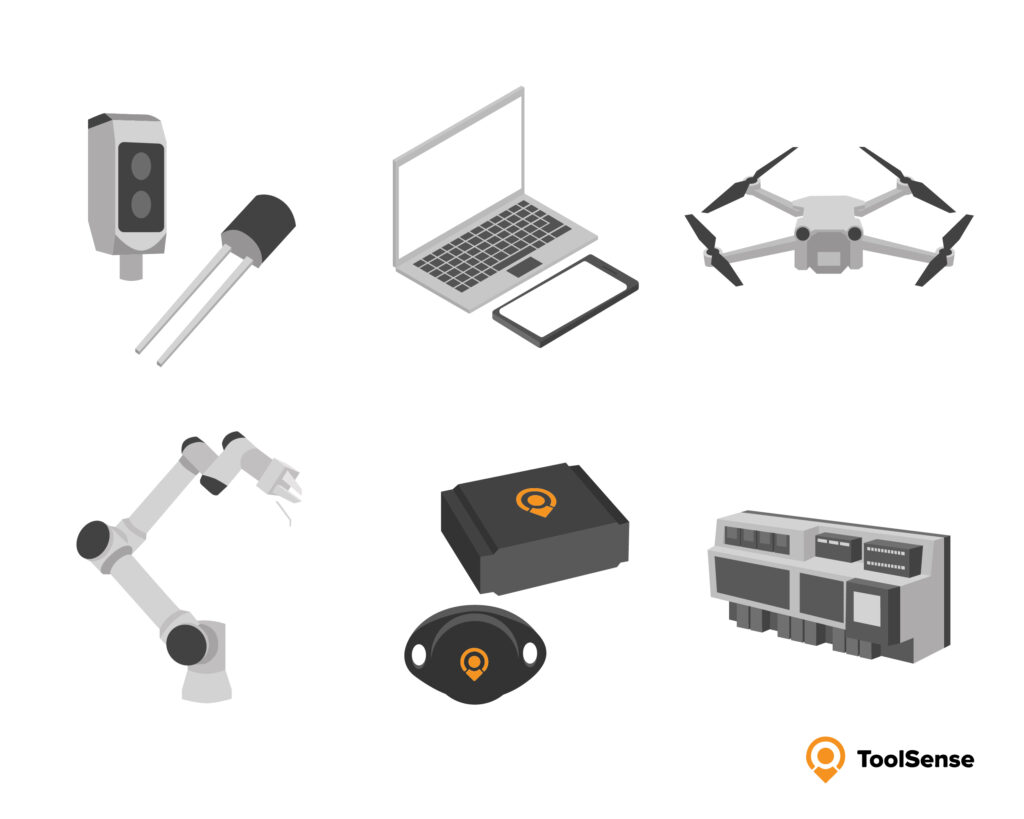
Integration and Application of IoT in Construction – Top Use-Cases
IoT has diverse applications in construction, from wearables for worker safety to sensors for structural health monitoring. These IoT solutions are designed to enhance project management and industry efficiency, ensuring that construction projects are completed on time and within budget. However, the construction industry has been relatively slow in adopting and capitalizing on new technologies like IoT.
Nevertheless, construction companies are beginning to realize the potential benefits of IoT technology and are exploring ways to integrate it. Some of the top use-cases of IoT in construction include:
- Fleet management
- Tools and equipment tracking
- Machine control
- Construction site safety
- Project management
- Site monitoring
The subsequent sections will provide a detailed analysis of these use-cases and their contribution to the overall efficiency of the construction industry.
Fleet Management
IoT technology has the potential to revolutionize fleet management in construction. It is steadily redefining fleet management, transcending traditional methods by introducing automated tracking of both vehicles and essential equipment. This advancement is pivotal in augmenting productivity, bolstering safety measures, and elevating site monitoring effectiveness. The utilization of IoT not only streamlines transit routes and vehicle maintenance but also plays a crucial role in the nuanced aspects of human resource management within construction projects.
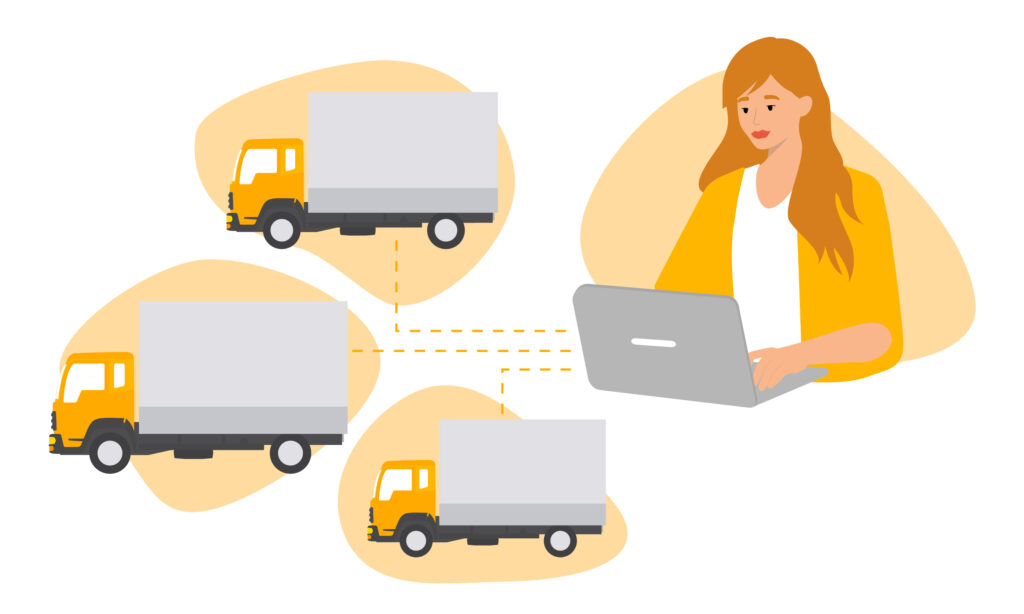
IoT’s integration into construction sites goes beyond mere tracking; it encompasses timely maintenance, efficient management of parts, and optimizes the utilization of machines. A notable example is the use of IoT-enabled fuel sensors, which serve as key tools in managing and monitoring fuel consumption. These sensors are instrumental in efficiently managing refueling operations, scheduling necessary maintenance proactively, and facilitating timely upgrades to machinery. Such applications are instrumental in curtailing project costs and compressing project timelines, thereby enhancing overall project efficiency.
This technological advancement in fleet management, powered by IoT, represents a significant shift in how construction companies manage their fleet of vehicles and machinery. It’s a move towards more data-driven decision-making, where every aspect of the fleet is monitored and optimized for peak performance. The result is a more efficient, cost-effective, and safe construction site operation, marking a new era in the construction industry where technology plays a central role in day-to-day operations.
Tools, Equipment & Machine Tracking
IoT devices are key to tracking tools, equipment, and machines on construction sites. They enhance productivity and reduce operational costs by enabling precise monitoring. Swift location and retrieval of tools are facilitated by IoT devices, minimizing time and resources spent on tracking misplaced items. GPS trackers equipped with IoT sensors are strategically used for accurate location and supervision of equipment and vehicle fleets.
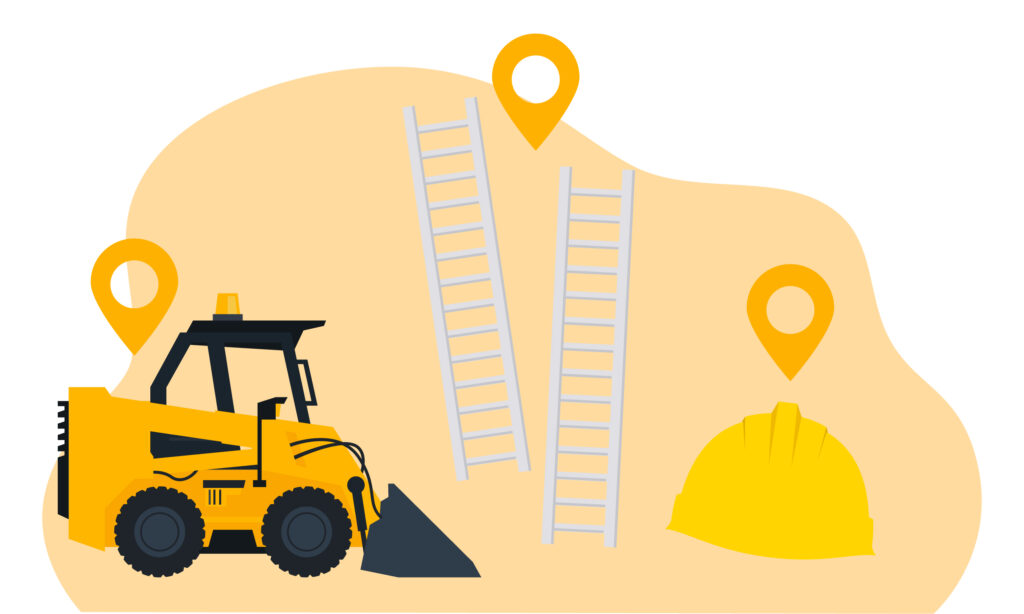
Moreover, IoT devices contribute to waste management and theft prevention on construction sites. For example, imagine a future where IoT-connected drones patrol and secure worksites, effectively deterring potential thefts. While this might not be a near future relaity for most building sites, the use of location sensors embedded in equipment is becoming a standard practice. This application of IoT in tracking tools, equipment, and machines optimizes resource usage and streamlines project management in the construction industry.
Machine Control
Machine control stands as a pivotal aspect of IoT in construction, delivering unparalleled precision in machinery operations and real-time updates on progress, movements, and status. This connectedness allows for the strategic planning and synchronization of various construction activities, enhancing productivity while reducing delays.
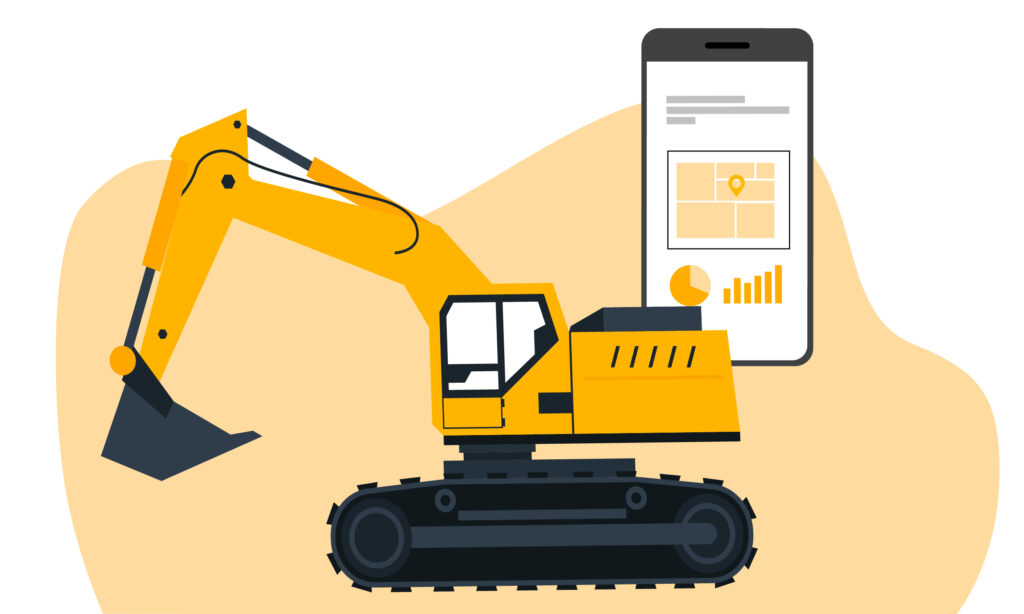
Primarily utilized in heavy civil construction, the scope of machine control technology is expanding into diverse projects as the technology evolves. Incorporating IoT in machine control, such as through wearables and safety sensors, exemplifies its unique applications in construction, significantly boosting operational efficiency and on-site safety.
Construction Site Safety
The advent of IoT technology in construction has substantially heightened site safety standards. IoT sensors can actively monitor workers’ health and alertness, track site conditions, and generate real-time maps to update potential risks. Smart wearable technologies, like helmets and boots connected to IoT systems, track vital signs and locations, thus alerting workers to imminent dangers and even enabling human resources managers to oversee personnel effectively.
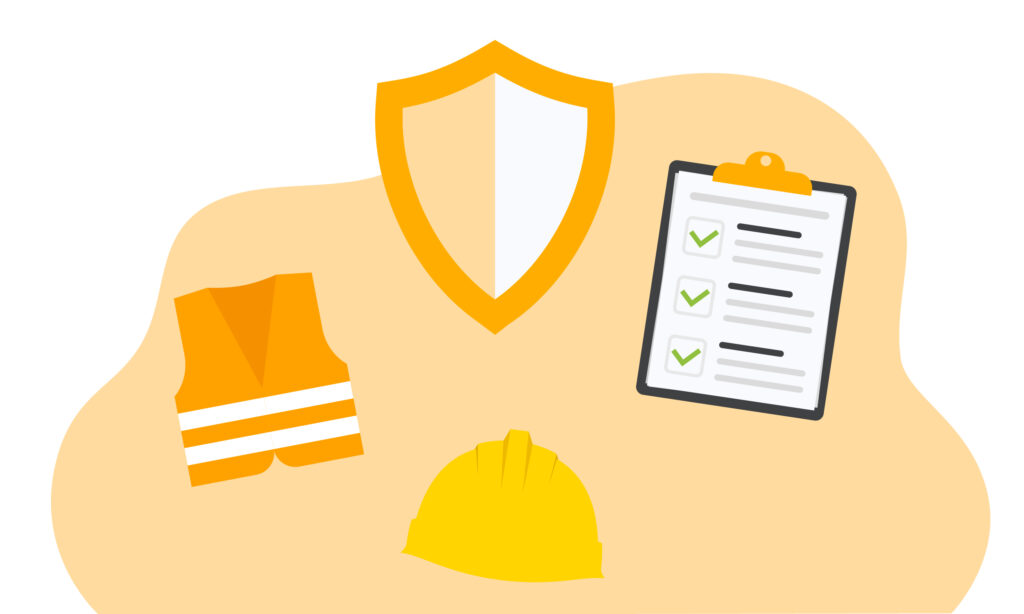
These safety sensors play a crucial role in accident prevention by:
- Promptly alerting operators or halting heavy machinery when it nears workers.
- Monitoring environmental hazards such as toxic gases or extreme temperatures.
- Alerting staff when environmental readings indicate danger levels.
The deployment of IoT for construction site safety establishes a safer work environment, significantly reducing the likelihood of accidents.
Project Management
IoT has a profound impact on construction project management, enhancing communication, reporting, and workflow coordination. By automating processes and enabling seamless data exchange, IoT devices simplify project management and keep managers abreast of project developments, facilitating informed decisions.

The integration of IoT sensors not only streamlines operations but also results in cost savings. This is achieved through better insights into asset utilization, efficient maintenance, and repair processes. For instance, IoT-enabled sensors for concrete curing monitor the material’s maturity in real time, enabling accurate scheduling and execution of construction tasks. Such IoT applications in project management bolster efficiency, minimize project costs, and assure timely completion.
Site Monitoring
Site monitoring is a crucial component of IoT application in construction, encompassing the use of sensors to continuously record jobsite conditions. IoT enables remote monitoring of environmental factors like temperature, humidity, noise, and vibration, ensuring safety and regulatory compliance.
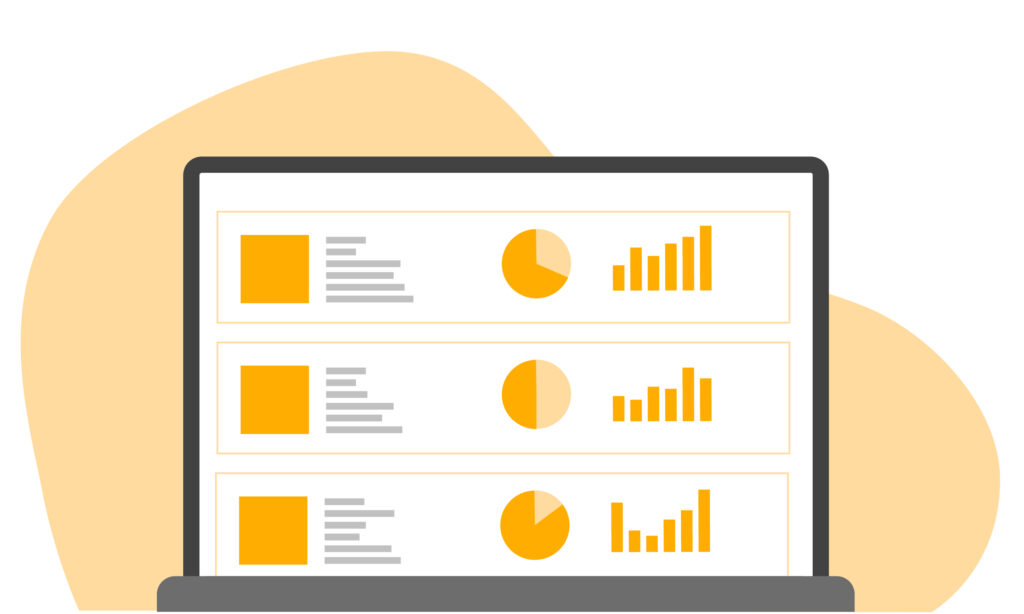
This ensures safety and compliance on construction sites. Companies like pillar.tech produce smart sensors that measure parameters like temperature, humidity, pressure, dust, VOCs, and noise, providing a comprehensive solution for site monitoring.
IoT technology also plays a vital role in structural health monitoring, allowing construction managers to remotely assess the condition of materials and structures, detect repair requirements, and ensure timely interventions. By implementing IoT solutions for site monitoring, construction companies can improve efficiency, reduce risks, and enhance overall project management.
Benefits of IoT in Construction
IoT in construction provides an array of advantages, transforming the way construction projects are managed and executed. These benefits, which have been highlighted throughout this article, include:
- Elevated Efficiency: IoT technology optimizes construction processes, reducing downtime and maximizing resource utilization. Real-time tracking and predictive maintenance are key examples of how IoT enhances efficiency.
- Increased Safety: Through the use of IoT sensors and devices, safety protocols on construction sites are significantly enhanced. For instance, wearable devices for worker safety and sensors for structural health monitoring have been discussed in previous sections.
- Cost Reduction: IoT technology helps in advanced budgeting and cost management. By monitoring and optimizing the use of resources, construction companies can save significantly on their budgets.
- Improved Communication and Coordination: IoT technology facilitates better communication and coordination between teams, ensuring everyone is working towards a common goal. This is particularly evident in the use of IoT in project management and site monitoring.
As the construction industry continues to evolve and adopt new technologies, the benefits of IoT are expected to become even more apparent, shaping the future of construction management.
Challenges of Implementing IoT Solutions and Hardware
While IoT offers a plethora of advantages in construction, the implementation of such solutions and hardware is not without its challenges. One significant barrier is the technology’s novelty within the construction sector, leading to hesitancy among project managers and contractors. This apprehension stems from a lack of widespread adoption and familiarity with IoT, potentially hindering its full-scale utilization and benefits.
Yet another significant challenge is the need for specialized skills to effectively handle and maintain IoT devices and systems. This need underscores a broader challenge in harmoniously integrating IoT solutions with pre-existing operational systems. Additionally, ensuring seamless compatibility between diverse IoT devices and legacy construction management software poses a substantial technical challenge.
Talk to our Team about how to take the first steps and make use of our Asset Operations Platform on your construction sites to improve efficiency and safe costs.
Despite these obstacles, the construction industry’s gradual embrace of IoT suggests a future where such challenges are surmountable. The evolution of IoT technology, coupled with increasing industry familiarity and advancing integration techniques, is likely to mitigate these initial difficulties. In time, these advancements will pave the way for a construction sector that is not only more efficient and safe but also more attuned to the digital age.
Case Study: ToolSense Asset Operations Platform – Insights from TYROLIT and Leonhard Weiss GmbH & Co KG
ToolSense, an innovative IoT platform, has been instrumental in revolutionizing asset management in the construction industry. This case study examines the experiences and outcomes reported by two prominent construction companies, TYROLIT Construction Products GmbH and Leonhard Weiss GmbH & Co KG, in their collaboration with ToolSense.
Leonhard Weiss GmbH & Co KG: Enhancing Operations and Sustainability with ToolSense
Leonhard Weiss GmbH & Co KG, a leading name in the construction sector, turned to ToolSense for an effective and neutral system for machine management, as discussed by Ralf Lüddemann, Head of Machine Technology.
Key Benefits:
- Operational Efficiency: ToolSense provided a unified platform to manage various brands and types of machines, streamlining their construction processes.
- Economic Benefits: The platform led to reductions in work hours and minimized data loss, translating into significant cost savings.
- Sustainable Practices: Emphasizing the industry’s growing focus on sustainability, ToolSense played a role in promoting environmentally friendly technologies and digital processes.
Improving Working Conditions:
- Safer and More Efficient Workplaces: ToolSense contributed to creating safer and more efficient working environments for construction workers through enhanced process transparency.
Learn more about how Leonhard Weiss GmbH & Co. KG benefitted from using ToolSense in our Video-Interview with Ralf Lüddemann (Head of Machine Technology) (german with english subtitles).
ToolSense Impact for Construction Companies
The experience of Leonhard Weiss GmbH & Co KG illustrates how ToolSense is propelling the construction industry forward through digital processes and machine data, improving efficiency and customer satisfaction. This case study demonstrates the platform’s adaptability in addressing various needs within the construction sector, from process optimization to sustainability and workforce improvement.
Users of our platform have reported an enhanced ability to manage assets more efficiently, leading to a direct positive impact on their bottom line. The intuitive nature of the platform, coupled with its robust analytics, has made it a favored choice among construction companies.
Our Asset Operations Platform stands as a testament to how IoT can transform industry practices, making them more efficient, cost-effective, and safe. As the construction industry continues to embrace digital transformation, we at ToolSense are well-positioned to lead this change, shaping the future of asset management in construction.
Future Trends in IoT for Construction
With the continuous evolution of the construction industry, the adoption and integration of IoT technology are anticipated to significantly increase in the future. Emerging trends in IoT for construction include the integration with smart cities and infrastructure, as well as synergy with artificial intelligence and machine learning.
These advancements in IoT technology have the potential to revolutionize the construction industry, automating mundane tasks and requiring digital proficiency within construction firms. With continued investment and innovation in IoT for construction, the future holds numerous possibilities for increased efficiency, safety, and cost reduction in the construction sector.
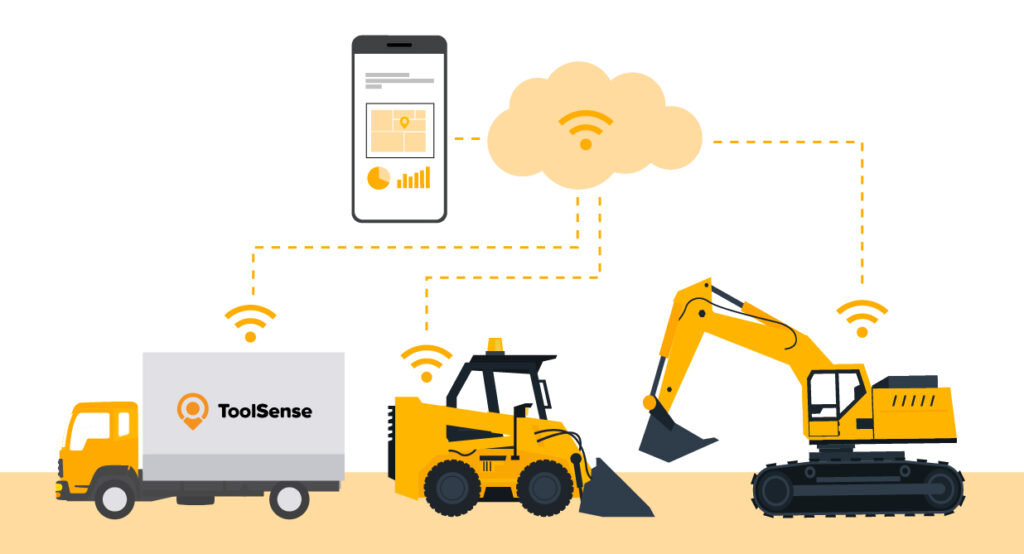
Conclusion: Advancing Construction with IoT
The integration of IoT in construction is revolutionizing the industry, bringing significant improvements in efficiency, safety, and cost-effectiveness. This technology allows for precise project management, enabling construction managers to monitor progress and optimize resources effectively. Despite the challenges in adoption, the compelling advantages of IoT are undeniable.
As the construction industry continues to evolve, IoT is becoming a key driver of innovation. From enhancing worker safety through wearable tech to improving site operations with smart sensors, IoT’s potential in construction is vast and increasingly recognized by industry leaders.
Looking ahead, the adoption of IoT solutions is pivotal for the future success of construction projects. It paves the way for a smarter, more efficient, and sustainable construction sector, positioning companies at the forefront of technological advancement and industry innovation.
Frequently Asked Questions (FAQ)
IoT technology in construction is the use of Internet of Things and modern-day internet software to maximize the efficacy of a project, such as real-time monitoring of construction sites and equipment to enable predictive maintenance and reduce downtime.
IoT solutions in construction are increasingly being used for monitoring via sensors, which help to identify potential issues before they become major problems. This ensures a higher level of efficiency and safety on the job site.
IoT is proving to be an invaluable asset for the construction industry, with its potential to increase connectivity, facilitate machine-to-machine communication, collect data from sensors, and enable data analytics. The future of IoT in the construction industry looks extremely bright.
IoT is used in construction by incorporating concrete sensors which enable construction teams to remotely monitor the curing process or check for any potential repair needs. This helps ensure that a structure is built with the necessary strength and stability.




